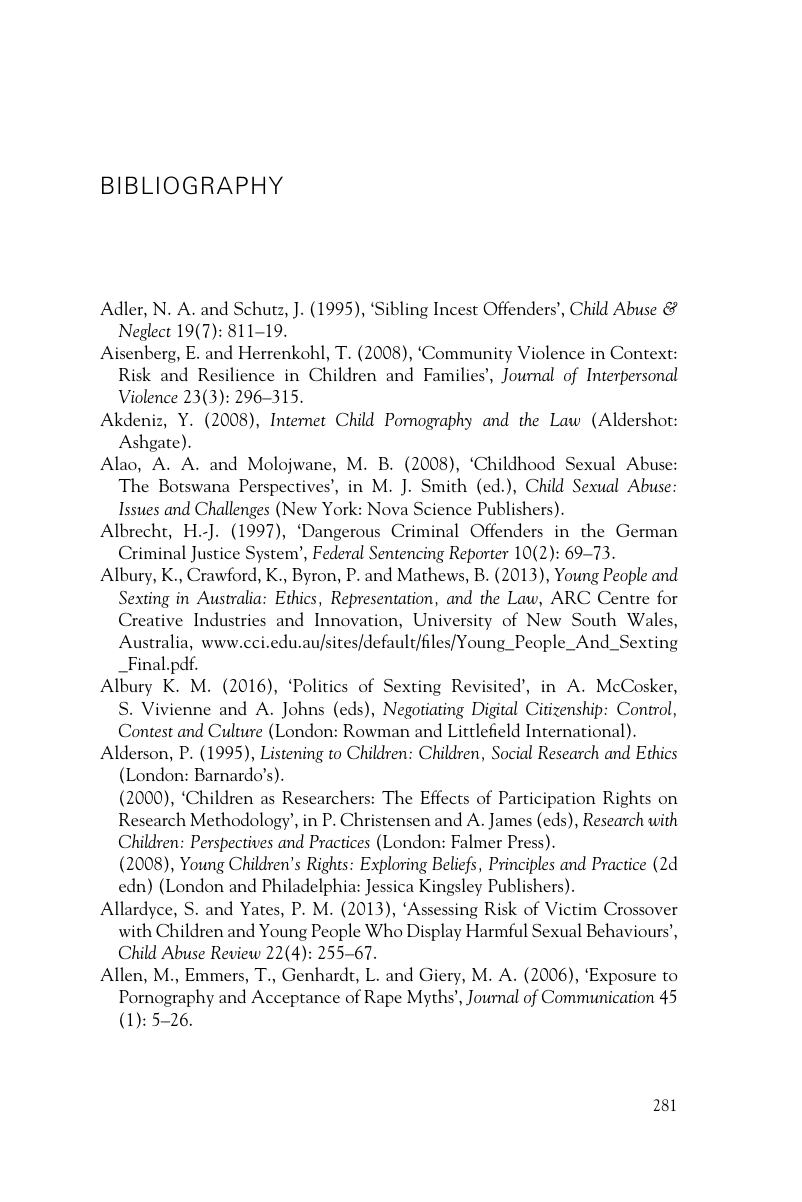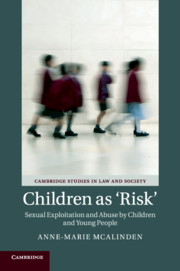Book contents
- Children as ‘Risk’
- Cambridge Studies in Law and Society
- Children as ‘Risk’
- Copyright page
- Contents
- Acknowledgements
- Part I The Theoretical and Policy Context
- Part II Children as ‘Risk’: Children and Young People Who Display Harmful Sexual or Exploitative Behaviour
- Part III Future Approaches
- Appendix: Research Methodology
- Bibliography
- Index
- Cambridge Studies in Law and Society
- References
Bibliography
Published online by Cambridge University Press: 20 September 2018
- Children as ‘Risk’
- Cambridge Studies in Law and Society
- Children as ‘Risk’
- Copyright page
- Contents
- Acknowledgements
- Part I The Theoretical and Policy Context
- Part II Children as ‘Risk’: Children and Young People Who Display Harmful Sexual or Exploitative Behaviour
- Part III Future Approaches
- Appendix: Research Methodology
- Bibliography
- Index
- Cambridge Studies in Law and Society
- References
Summary

- Type
- Chapter
- Information
- Children as ‘Risk'Sexual Exploitation and Abuse by Children and Young People, pp. 281 - 347Publisher: Cambridge University PressPrint publication year: 2018



